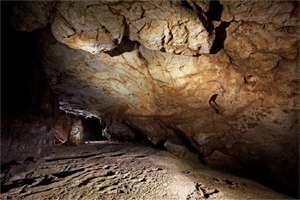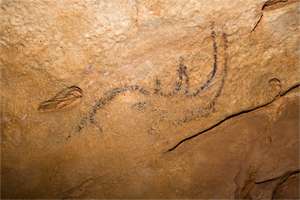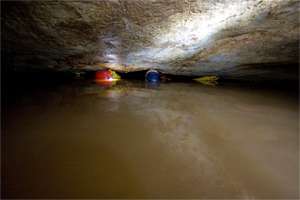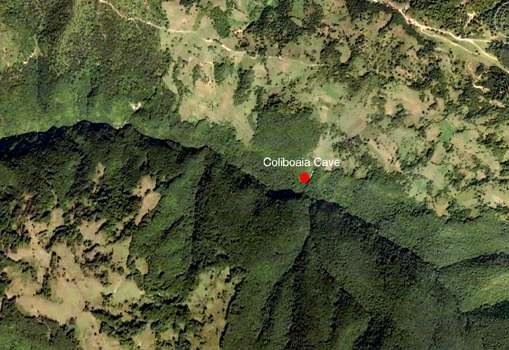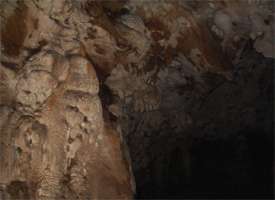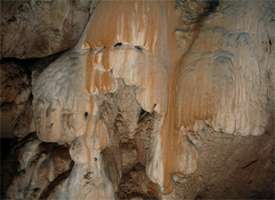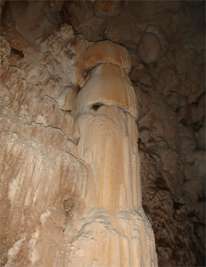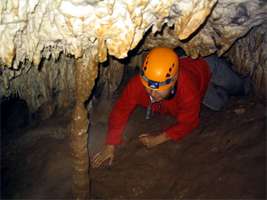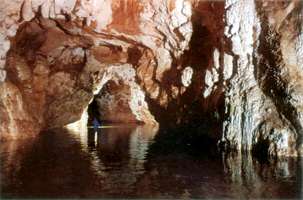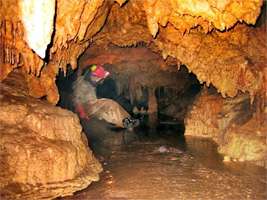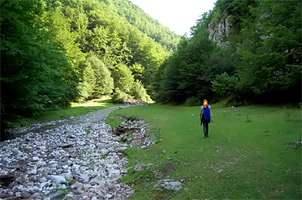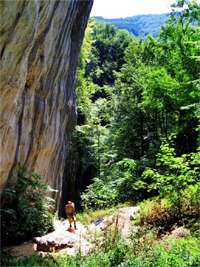Tourist in Romania (english)
 The Bucegi Mountains are located in central Romania, south of the city Brasov and they are part of the Southern Carpathians group of the Carpathian Mountains.To the east, the Bucegi Mountains have a very steep slope towards the popular tourist destination Prahova Valley . At a higher elevation is the Bucegi Plateau, where wind and rain have turned the rocks into spectacular figures such as the Sphinx and Babele.The Bucegi is believed to be the Dacian holy mountain Kogainon, on which the God Zalmoxis resided in a cave.The legendary Sphinx of the Bucegi Mountains is a rock shaped by wind and other natural phenomenon as man’s head.It is considered to represent a spiritually powerful place and a symbol of the spirit of the Dacians, ancestors of the Romanian people.
The Bucegi Mountains are located in central Romania, south of the city Brasov and they are part of the Southern Carpathians group of the Carpathian Mountains.To the east, the Bucegi Mountains have a very steep slope towards the popular tourist destination Prahova Valley . At a higher elevation is the Bucegi Plateau, where wind and rain have turned the rocks into spectacular figures such as the Sphinx and Babele.The Bucegi is believed to be the Dacian holy mountain Kogainon, on which the God Zalmoxis resided in a cave.The legendary Sphinx of the Bucegi Mountains is a rock shaped by wind and other natural phenomenon as man’s head.It is considered to represent a spiritually powerful place and a symbol of the spirit of the Dacians, ancestors of the Romanian people.
Sources: Cristi Moise
If you don’t know much about geology (or even if you do), the images featured below remind more of the works of Brâncuşi… And if you try to find a definition of what they are online, you cannot really manage without guidance. These are “trovants” – or concretions – a volume of sedimentary rock in which a mineral cement fills the porosity (i.e. the spaces between the sediment grains). As you expected they are rather rare formations, and you’ll only find them in remote locations, like the Bowling Balls Beach (Mendocino County, California); Jameson Land, East Greenland; Costesti, Romania; and a few other places… but we like to focus on Romanian territory here.

In Romania, you can find these spectacular stone formations in a place called Rezervaţia Naturală Muzeul Trovanţilor – in English Trovanti Museum Natural Reserve. The reserve is situated in Costeşti, Vâlcea (not far from Horezu and the National Road 67). The reason this is not already more popular is its relative young age – the reserve was only opened in 2005, under the careful administration of the Kogayon Association. The association itself is young as well, founded only in 2003, at the initiative and with the resources of a group of students from the Faculties of Geology and Geophysics within the University of Bucharest.

For many travelers, the oddly-shaped stones that spread all over the place look signify as many photographic opportunities. Tourists are not afraid of the local legends, that say that the stones bring bad luck, and even those who do believe in evil, witches and curses still come along to experience the scenery first hand. The local peasants call them ‘Stones that grow’ for a good reason: they were not brought here from a different location. They were formed some million years ago, in the Upper Miocene. And the stones continue to grow at rainfall…
by Mihaela Lica









Galgau Almasului, Judetul Salaj
Zmeilor garden is a particularly spectacular natural phenomenon, unique in Europe, considered by specialists. Reservation contained in an old tourist guide as “Garden Zmeilor. Locals call it “Girl Catanii. Is situated in Mount Meses, massive forming part of the Western Carpathians, near the town gurgling Almas, county Salaj.Reprezinta a geological reserve consists of many huge rocks, placed in a high clutter (buildings, towers, poles, mushrooms , rocks and animal forms). Spectacular forms of these formations can be explained by sliding layers of conglomerates and sandstones. Water had a significant role in shaping these rocks.Due to landslides natural forms of these elements may change from year to year. Most impressive are two prismatic rocks suggestively named “Zmeu” and “Zmeoaica. Other stone blocks were suggestively named “Santa”, “Eve” and “Dorobantu. Formations here were born by separation of blocks or sections of the massive sandstones are Inchieturi hill (376 m) and slip clays their purple at the base, to wire back hair. Subsequently, erosion and wind and rain denudatie, formed the most bizarre columns, buttresses, bridges, mushrooms, etc..some with heights of over 10-12 m (Suraru, 1967). Overall, they form a cluster chaotic strange that in every point where we look at other images depict the other, the most strange and surprising. “Garden Zmeilor” occupies an area of five hectares, the first formations to the slope. About Garden Zmeilor there is a rock legend called “Catanii girl” who turned into stone sheepfold to curse his mother. A column of the formations look like a virgin with a cofita the shoulder. Currently, “Girl Catanii” no longer exists. It collapsed in the floods of 1973.Rock looks like a girl who was a soldier from her and seemed to have a basket on his shoulder. Is a particularly spectacular natural phenomenon and is situated in Mount Meses, massive forming part of the Western Carpathians. It is located near the town of Salaj Almas gurgling. Here can be reached by train halt until the line pa lime Dej – Jibou – Baia Mare, then another 4 km to the south.
The Living Fires of Lopătari, Buzău are among the most mysterious, and unusual, phenomena you may find in nature, on a hiking path, within your reach. That’s if you know where to look. Romania was blessed with a few such miracles, places that could become its landmark tourist attractions, yet few is known about them. Today, we’ll take a look at one of those attractions, that, at the time I left Romania, was neglected by the authorities, and was known only by locals and a few enthusiastic mountaineers. Things have changed in the past ten years, with news of a future Geo-park “Land of Buzău” emerging in the media, but the development may take years to complete.

56 km from the city of Buzău, the county seat of Buzău County in the historical region of Wallachia, you’ll find the commune Lopătari. In one of the villages of this commune, Terca, there are the Living Fires (in Romanian: Focurile Vii) – a natural phenomenon, unique in Europe, but not unique to Romania. You’ll find a similar one, considered even more spectacular by some travelers, at Andreiaşu, a commune in Vrancea County, in the historical region of Moldovia, north of Buzău; and one in Reghiu commune, Vrancea, in the village of Răiuţi – only 8.5 km north of Andreiaşu.

Although the Living Fires of Andreiaşu (image above) occupy the most extensive area (400 m²), the Living Fires of Buzău are more popular with tourists, as they are situated close to other interesting natural attractions in the county, including: the Muddy volcanoes, the amber from Colti, the Salt from Meledic, the petroleum springs, salty springs, and so on.
 This is a closeup of the freely burning natural gas at Terca, Lopătari. On the fire, you can even cook a meal. Image courtesy, Wikipedia Romania.
This is a closeup of the freely burning natural gas at Terca, Lopătari. On the fire, you can even cook a meal. Image courtesy, Wikipedia Romania.The natural emanations of gas are lit at the surface, under the rays of the sun. The fires burn at night as well, when the scenery is at its most spectacular display. At times you can see a flame rising up to 1 m into the wind above the ground.
If their story has triggered your interest, then take a trip to Terca. In the summer, make sure you have enough water with you, the weather in Romania tends to get very hot, and the area around the Living Fires was not developed for tourist purposes. To understand, this is one of the signs marking the way to the Fires:
 A handmade sign marking the way to the Living Fires of Terca (probably by a villager, or mountaineer).
A handmade sign marking the way to the Living Fires of Terca (probably by a villager, or mountaineer).To reach the place, drive through the city of Buzău, on the route Mărăcineni–Sapoca-Manzalesti-Lopătari-Terca (the GPS coordinates are N 45.53578 E 26.54857). If you drive through Berca, it’s better to use a four-wheel-drive vehicle. In fact, it’s good to have a good car to drive from Lopătari to Terca anyway. Prepare for a hike as well: the car cannot take you to the Fires. You have to cross a handmade wooden bridge, that looks ancient and wobbly. Then the road takes you on uneven terrain up the hill, on a hike that, although not difficult, it could be pure torture after the rain (mud and all). Below, the terrain map of the area.
The only papyrus from Romania, discovered 53 (1959 I mean) years ago is written in old Greek. It is unique because it is whole. It dates from IV Century before Jesus. The place ? The Mangalia Resort , Statiunea balneo-climaterica Mangalia . It was transported in the Russian State of the UdSSR, in the same year for restauration and conservation . But in the summer of 2011 it was returned to the officials of The Archaeological Museum of Mangalia , Muzeul de Arheologie Callatis din Mangalia.
Callatis – the story of a city
Whether called Cerbatis or Acervatis, Callatis Pangalia, Mankalia or Mangalia, geographical position of this place always sat in the middle of history. He became the oldest known settlement in the country, while the scene of political, economic social and very important, which generated over time change of identity, without affecting the essence of place: a bit of brilliance Greek, a littlethe joy of glory, a bit of spiritual strength and a touch of deep Turkish Romanian wisdom associated with a sense of introspection. A unique rainbow sky Balkans, where each color is well individualized, but inseparable, in fact.
Callatis – the most beautiful
First settled here were Thracians, founding the settlement known as Acervatis or Cerbatis. Thracian settlements in the former, the Greeks landed here will build the city which would remain in history as the Callatis, famous for its material and spiritual prosperity, but also for famous scholars whom he sheltered from its walls.
The late fourth century BC Inteimeiata, by the people Heracleea Pontic, located on the Asian side of the Black Sea, the city was named in memory of Calesa river that surrounds land Heracleea metropolis. Predicting an oracle was the one who was in the building Callatis, the city that would become in a short time, one of the strongest in the area, but at the same time, and one of the richest.
Advantageous geographical position immediately convinced of the desirability of building on Greek settlement in this place: locked and access to a freshwater lake (now Lake Mangalia), fertile land, an advantageous military position, however confirm the vision oracle, who guided the Greeks to the ground. Unlike the other two cities, Tomis and Histria Milesian colony, mainly commercial and democratic, was the only colony Callatis Doriana, practicing agriculture and a leading oligarchic rather than democratic, where power was held only a few families. Even so, Callatis the saw in a very short time success. Cereals and maritime trade were two of the sources that provided the city a wellspring of wealth.
A situation could not have flourished as not to attract neighbors envy.Throughout its history, the city was placed numerous times in the face of strong sieges. But who was to submit its Pontic allies with Macedonian domination, lasted five years, from 313 until 308 BC They became free from the death of King Lysimachus conqueror, in 281 BC A long siege was not so as not to put their mark on the settlement, but again, the city was rebuilt quickly, quickly going through the steps of material wealth and cultural.
Around 262 i.e.n. Tomis Fortress began. Frightened by the idea of competition, the locals tried sabotaging construction, but experienced a resounding defeat of the Byzantine war fleet, came to help tomitanilor. Just like Phoenix, the city has returned shortly, keeping the head still for a while in the cities located on the shores of Black Sea, Pontus.
Romanian period that followed brought more prosperity to the city, now occupying the second position, after Tomis. Under the reign of Emperor Diocletian (284-305 AD) Constantine the Great (306-337 AD), then under Anastasius (491-518 AD) and Justinian (527-565 AD) , the city flourishes. I built new buildings, is created first bishop and resume trade. The two cities have full advantage of favorable business conditions from the Roman Empire created.
Cultural life in the city
Many residents of the city account free of material concerns were dedicated to the cause of spiritual ministry. At that time, the famous ancient geographer, Demetrios of Callatis developed a documented geographical work on Asia and Europe, contained in 20 books. This space inspired and playwright Istros of Callatis in writing a beautiful book about the tragedy. Another scholar originally from Callatis is Satyr, who lived in Egypt, where he wrote a book that was preserved in a fragment, “Life of Euripides.” History Laertiu Diogenes speaks in his writings about Heraclid philosopher (170-146 BC), a native of Callatis, who lived in Egypt at the court of King Ptolemy, during which he wrote six books about succession in time of philosophers about lembeutic reasoning.
The first coins minted here dates from around 300 BC, were made of silver and were represented on one side the head of Heracles, and the other, symbols of the city: quiver, bow, stand on end and ears of wheat. Later came bronze coins, which reproduce on the obverse images of the gods Dionysus, Apollo, Athena, Hermes, Demeter, and the reverse short city name, or Kala Kalla.
Mankalia
Avar invasion towards the end of the fifth century e.n. would finally put an end to one of the most beautiful and prosperous cities of Pontus Euxin. Powerful fortress settlement has become a simple port, which has kept for long look left.Mention of a map of Pisa, which dates from the twelfth century, as the settlement revive Pancalia Pangalia or equivalent in Byzantine Greek for “Callatis’ Greek classic, translated as” the beautiful “. Two centuries later, a French traveler, Walerand of Wawrin, mentions a port that you called Pangu built on the former cities Callatis. Commercial function of the port began to fade and the first mention of the settlement as the Mankalia is made in 1593 by Paolo Giorgi. Another seventeenth-century explorer, this time Turkish Evlia Celebi, speaks Mankalia as one of the largest ports in Dobrogea.
Since then, the settlement went through several transformations, but not always the most happily. In the last century, the city was preferred by Romanian artists, who went bohemian life here in little houses and picturesque, which resonate in a space of tranquility, away from the hectic world. Manuela Cernat describes in the preface of the book “Mangalia in the pages of time” by Aurelia and Stefan Lapusan a small painting of the city after the Second World War:
“Paradoxically, in full Sovietization away from the capital, looking at the border, Mangalia still breathing and living in pre-war rate. In too brief respite to tightening the bolt, here regroup quickly banished artistic cream of Balchik. Tudoran Radu Brothers and Geo Bogza pictoritele Marcela and Florica Cordescu, Cezar Petrescu and Joseph Igirosianu novelists, actors and Radu Grigore Vasiliu Birlic Beligan, directors and Marietta Sadova Sica Alexandrescu, vocalist Stroici Manole, epigramistul Pastorel Teodoreanu and a lot of beautiful women and very elegant gave shine watch the cliff walk. ”
Callatis – card
It is the oldest city in Romania;
The area has been inhabited since prehistoric times, proof of being a Neolithic remains of material culture from Gumelnita;
The city is the only Doric colony on the shore of Pontus Euxin;
This papyrus was found only in Romania. Tomb of the papyrus was discovered in 1959, is dated in the fourth century BC Inside the tomb is built of cut stone blocks, being 1.5 meters below ground level. It is assumed that the buried here was a man of mind, and he was found near a papyrus written in Greek, first discovered in our country. There is controversy regarding this document, immediately after discovery disappeared. Due to very wet climate, the practice was abandoned very quickly scrolls the scribes of the time, they are replaced quickly scrolls much more resistant to moisture. Archaeologists feared what might happen to the papyrus, once uncovered, so they invited a Russian specialist to deal with taking it and decipher it, but once the document has made contact with light, shattered, and shattering the hopes of researchers decipher the message. But the scientist took the papyrus with him in Russia in an attempt to rehabilitate declared in the laboratory and to try decoding it, but then, no longer knows anything about this document. Some researchers have tried to learn something about the fate of papyrus and government through diplomatic channels, but their attempts were left unanswered. A Roman archaeologist has identified a history book printed in Russia a fragment of papyrus from Mangalia, which stated that it was saved, but has not been fully deciphered;
Both the inside walls of the fortress Callatis, and Roman ruins of the building can be seen near the coast town still Mangalia;
Former port city is currently covered by the sea. It was located in the south of the current port.
Some citizens were mercenaries royal Callatis in Egypt;
Under the arches of the basilica rang Callatis apparently Te Deum Laudamus first, composed of Nicetas Remesiana;
The city signed a peace treaty with Rome, currently considered the oldest known document in Latin in Eastern Europe;
In the first century AD, the city helped with money Callatis Rome;
The city is the first spa in our country, mesothermal sulfur baths are known since the time Burebista;
Under the Emperor Gordian (238-244), the first association worked Callatis hunters mentioned here, as is evident from an inscription on a marble slab, located at the Museum of Archeology in Constanta. Here were inscribed in Latin and Greek names of 43 members of the association amateur hunters, dated from III century BC;
Callatis originate from the famous scholars who lived in Hellenistic Egypt: Demetrios, Heracleides, Satyr, Istria, Thales;
Leontios Christian Byzantine scholar (485-542) was born in Zaldapa near Callatis.
The old Greek gymnasium in new profile sports, worked in the first century AD Callatis
Between the fifteenth and sixteenth centuries, was part of pashalic Mangalia Rumelia, the seat of judicial districts, called “accommodate”
Sultan Mosque is the oldest Esmahan cult Muslim Romania;
Occur in 1883, Mangalia, Triangle, Journal of masonry in Romania, with the help of Constantine M. Moroiu, Grand Master of the Grand National Lodge of Romania;
Mangalia is declared in 1899 the first sea and spa resort in Romania, after laboratory tests settled as its mineral waters are sulphurous, alkaline, slightly chlorosodic and iodine.
Mangalia their walls resting on one of the richest cultural heritage, which has a value and whose immense implications, realized, would bring added value to this settlement seems always beaten, both by the wind, waves and sun. The city rests on an archaeological treasure, but few know how to live the wonder of this place blessed by history, which was one of the first centers of civilization.
He remained famous speech recorded in history held by illustrious learned Nicolae Iorga, in honor of Mangalia city. Phrase, consisting of 120 words was read in a radio broadcast “in the dark tips”:
“It was later still, the view that shore of Dobrogea, which we know so little and not include only the illusion of silver in the picturesque Balchik and a poor Tatar-Turkish race that takes the wind today, I came to appreciate, of course not trivial and lust naval health resorts, ugly icon in our times lack of modesty, but in loneliness from Mangalia, beauty series that finished in frost easy charm of the backlight, which you looks a world away, chased by the boats lights capture fishermen who catch torches and spells the glimpse from the depths and especially the thing to remember is calling this morning, in fact even more cool day, the Luceafarul that rises vioriu sky suddenly in bed, and is an awakening to new life, you have to start the deep water for residents, as well as for those who, today, on the ruins of Hellenistic cities, leading only remnant of a civilization sad and vulgar that us until today I knew it live. ”
This document is based on the following URL Lista fenomenelor unice din Romania with additional bibliography both in English and in Romanian.
Rupestre Skeet Establishment; in Romanian: Complexul schiturilor rupestreThe vicinity of Rupestre Skeet Establishment Complexul schiturilor rupestre The Buzau County Bozioru commune / parish is recognized as a place with a strange sky (cer straniu) . The Bozioru – Fisici village and small village Nucu situated into the neighbourhood of Gotes Lake, has a cupola of a sky with a non – very similar clearness . Its intense nuance vexes the scientists. The scientific measures made have estimated from the shine measurements of the Bozioru village ‘s sky have a value of 23,000 (twenty three thousands) Kelvin degrees. NB: a normal bright sky value is of 6,000 Kelvin degrees and so. , ,Like a vortex, absorbing to other dimension the Bozioru’s sky you became flat (like in hypnosis ! ) transported in the depth with unknown vehicles ! The extrasensorial researches considered without any doubt as being one of the energetic gates of the UNIVERSE !! , ,Besides the unusual sky,the more or less official organizations have been attracted by the usual events at Bozioru commune . Mysterious disappearance of people ! These people have not appeared anymore or they have been moved to another place instantly ! All of them haven ‘t remembered anything about this situation ! ,At Bozioru commune: a. The electronics devices become non functional ! b. There are radioactive springs, so called immortal waters ! c. There are magnetic anomalies ! d. Even UFO’s !!! e. There is sudden activation of the telepathy phenomenon ! f. Or, other extrasensorial events even in the case of normal human being who get there. The Rupestre Drawings / Designs from the Coliboaia’s cave (the Bihor County)In this Coliboaia’s cave entitled in Romanian Prezentarea judetului Bihor the Romanian speleologists found out the designs certified by measurements as being the oldest from Central Europe(35.000 years old) . These designs show animals of those periods likes: bisons, rhinoceros, bear heads, all of them well conserved, due to good conditions of humidity . The cave is closed now because the specialists have to continue their investigations. Besides the drawing zone is extremely difficult to be reached. The Bones Cave from the Minis Valley – the Place Where Lived the Oldest Human Being from EuropeThe carstic system of the Valley of Minis is situated in the vicinity of Anina See Prezentarea judetului Caras-Severin or The Caras-Severin County . The cave has been renowned since a decade ago . Pestera cu oase din judetul caras Severin (Bones Cave) is the place where the oldest mortal remains in Europe of the modern human being have found . The fossils of three people(35,000 – 40,500 years old) using calibrated data. The Oldest Whole Papyrus from EuropeThe only papyrus from Romania, discovered 53 (1959 I mean) years ago is written in old Greek. It is unique because it is whole. It dates from IV Century before Jesus. The place ? The Mangalia Resort , Statiunea balneo-climaterica Mangalia . It was transported in the Russian State of the UdSSR, in the same year for restauration and conservation . But in the summer of 2011 it was returned to the officials of The Archaeological Museum of Mangalia , Muzeul de Arheologie Callatis din Mangalia. Do You Believe Cars Ascending Uphill Without the Motor ?Do You Believe the Water Flows Up ? There are places in Romania, where the cars ascend a hill without using their motors ! Where ? At: 1. The Bucium The County Iasi zone. 2. The Gutai Mountains, crossing between Baia Mare and Sighetu Marmatiei (both towns situated in the North-West of Ardeal alias Transylvania). 3. The Tihuta pass / strait / gorge near: Babadag and Tulcea (Dobrudja, South-East of Romania), Maramures, Statiunea Obarsia Lotrului din judetul Buzau sau Magura Baciului din judetul Bacau. Please do not avoid these touristic places !! The Baciu Forrest and the Paranormal TourismPadurea Baciu din judetul Cluj . See Panoramio of The Baciu Forrest . This forrest situated at five kilometers away from Cluj-Napoca metropolitan area, became well known in 1968 when Emil Barnea published a photo of an UFO . Here exists a magnetic zone of 300 meters, where tree moss does not indicate the North Pole and mushrooms usual for this forest do not grow never! Here have seen red frogs of giant dimensions ! In this forest it was the heavy rains but only on the 300 meters zone !! More spectacular: the photo cameras imortalised the angles but not visibles with our usual eyes . Besides the mysterious UFOs appearances, some paranormal phenomena appeared in the Sanziene night . See: The significance of Romanian word Sanziana . In such nights some people disappeared like in the Bermude Triangle ! Small Canyon of Romania: in the Chasms of Rapa Rosie ( the Red Precipice )The small brother of Colorado Grand Canyon is placed at a distance of 3 kilometers from Sebes a town in the Alba County Judetul Alba . It is named Rezervatia Naturala Rapa Rosie . It has a surface of 250,000 sq.meters and too . This reservation attracts hundreds of tourists each year. is a geological reservation with vertical walls up to height of 100 meters. The tourists are attracted by the unusual forms hollowed (by water) in the hillock clay. The Sapphire Between the Hills – The Blue Lagoon of AghiresThe kaolin exploitation from Aghires passed through an impermeable layer of clay and prickled the phreatic water or a subterranean spring . The water overflowed into the whole quarry . The lake is named Blue Lagoon Laguna Albastra din Aghiresu due to the color of the water full of clay . See this YouTube about Blue Lagoon near Cluj Napoca metropolitan area. What is funny is that the hues of lake borrow the sky color. It is gray like gloomy days. At Zaplaz There Are Gates Towards Other DimensionClimbing from the so called the Spirla Shelter see a Panoramio de la Refugiul Spirla, Masivul Piatra Craiului and The Chalet and refuge like Spirla shelter and others are situated in the Piatra Craiului Mountain . Spirla is in the direction of the Nordic ridge of the Piatra Craiului Mountain La Lanturi (At Cables, Piatra Craiului, King Stone in English ) you notice breaches into the rock. So you wonder how was it possible ? These heights have been in the Prehistoric Era the bottom of the Sea. As a proof you see heaps of shells stoned spread on your alpine route . What hand has the patience and force? It is the time hand water, wind and so on.The Garden of Dragons (Gradina Zmeilor) ReservationGradina Smeilor, Galgaul Almasului, judetul Salaj , Dragons Garden is both a geological and morphological reservation quite impressive . Place: The Salaj County , 10 km from Jibou – harta Romaniei , near The Galgaul Almasului . Blocks of stones with various forms of erosion and sizes are laid in a great and �miraculous disorder�. The Living Fire (Focul viu)Rezervatia Naturala Focul Viu is placed in The Buzau County . See Panoramio of The Slanic Valley . It is situated between a hill and the Terca Village, belonging to the Lopatari commune . In fact, it represents a natural phenomenon. The natural gases emanations are on the base . Under the Solar rays they are transformed in a fire with infernal throbs. The flames could have 50 -100 centimeters heights . It is considered as a natural monument being registered in the Data Base of protected areas of the World. The Hollow / Cavity of Rugionasa (Groapa Ruginoasa), a Unique Phenomenon in EuropePlaced on the East of Vartop Pass, Batrana Mountains Rezervatia Naturala Groapa Ruginoasa din judetul Bihor is an immense cavity with a form of an amphitheater. Dimensions: 600 meters and the deep of 100 meters. The phenomenon offers an unforgettable landscape. Altitude: over 1,300 de meters. Groapa Ruginoasa is formed due to erosion in a short (80 years) period of time. The erosion process reveled coartzite layers. The color is red – violaceae . In the distance the zone appears with an open wound into the mountain’s body. The layout is fantastic and suggests a picture like the Colorado Canyon . Today it is a real morphological laboratory. The Witches Marsh (Balta Vrajitoarelor)Balta Vrajitoarelor is situated somewhere into the Boldu-Creteasca forest . It is in the near of Bucharest, near the Stefanesti commune . See an YouTube. This enchanted marsh has a couple of meters in diameter and less of two meters deep . The dimensions do not stop the witches to join in special moments over the year like: the Nights of Saint George, the Nights of Sanziene, and Saint Andrew. It says in these moments are opening the gates of other realms !?! At these events the witches are supplied with magic powers ?!? , which are transmitted from generation to generation. After The Earthquake of March 4, 1977 some eye witnesses support that in Balta Vrajitoarelor had been discharged rocking trucks full of debris to be stopped up . Not only this marsh has not been stopped up but the whole debris disappeared after a couple of weeks. The Bucegi Sphins (Sfinx) Have More BrothersThe Famoous Sphinx of Bucegi Mountain has a small brother in Cheile Tatarului din judetul Maramures , the Gutai Mountains see this YouTube . Its name is Sfinxul Maramuresului. It resembles sooner with a Daco – Getic head . It is composed of ardezie rocks . The slate means ardezie in Romanian is very resistant at erosion. Sfinxul Maramuresului will be covered by the waters of Runcu – Firiza dam / barrage. In the Buzau County exists another Nature monument. It is not so well known and resembles with a human face . It is called Sfinxul de la Breazau-Bustea din judetul Buzau and is situated near Bustea, the Manzalesti commune, 50 km from Buzau town on the Slanicului Valley . Some historians consider Manzalesti as being one of the oldest settlement in Romania. Bibliografie aditionala – fiti prudenti !
Special places full of sacrality and archeological places
Author: Dan Somnea
|
The face of the first European who lived 35,000 years ago in the Carpathian Mts, in the present territory of Romania, was re-constructed in a first, on the basis of bones found in the county of Caras-Serverin, western Romania, in a cavern.
The reconstruction of the face was made for a documentary “Incredible journey”, which will be aired on BBC 2. It reviews the origin and evolution of humankind. The document presents both the place where the first people appeared, in Africa, and the migrating routes that made the human species populate lands far away, said British daily The Independent, taken over by several dailies from Romania.
The skull of “the first modern European”, as it was called subsequently, was discovered in 2002 in Romania, at the Pestera de Oase (Bone Cavern), where the bears in the area hibernate. The area lies in the South-Western Carpathians, Caras-Severin. The scientists dated the bones using radioactive carbon, they said they are 34,000-36,000 years old, when Europe was populated both by the Neandethals, who lived in the region for hundreds of thousands of years, and by modern people, Homo Sapiens, who arrived more recently on a migrating route from Africa to Europe, via the Middle East.
The Neanderthals lived in Europe for 300, 000 years, surviving the Glacial Era, but they survived the Glacial Era, and disappeared some 25,000 years ago, from reasons not known yet. Homo Sapiens arrived
Sources: Financiarul

Picture of ‘the high gallery’ in Peştera Coliboaia, Romania, the place where most of the cave paintings were found.
Photo: Andrei Posmosanu © Romanian Federation of Speleology – FRS
Andrei Posmosanu is an excellent photographer, with a special interest in landscape and cave photography. His work is technically superb, and has outstanding artistic merit.
This photograph from the site: http://www.dr.dk/Nyheder/Udland/2010/06/14/093359.htm
Central Europe’s oldest cave paintings discovered at Coliboaia Cave
http://www.iasiinvest.ro/index.php?option=com_content&task=view&id=35840&Itemid=63
IASI INVEST – cotidian online de business
The oldest cave paintings in Central Europe, estimated at between 23 000 and 35 000 BP, have been discovered by a team of Romanian speleologists at the Coliboaia Cave, Campani, Bihor County, western Romania, and certified by French paleontologists. The chairman of the Federation of Romanian Speleologists says it is the first time that Paleolithic paintings so old have been certified in Central Europe. Judging by their style, they could be rated as Gravettian or Aurignacian.
Those who discovered the paintings nearly three months ago are speleologists Tudor Rus (the Spedova Stei Cave Exploration Club), Mihai Besesek, Valentin Alexandru Radu and Roxana Laura Toiciu (the Seowest of Arad Cave Exploration Association), Marius Kenesz (Speo Club of Zarand), who explored the Dealul Secaturii – Coliboaia Cave in the Sighistel Valley, near the village of Campani.
After the discovery, protection was secured for the paintings while French specialists, who arrived in Romania on 16th May 2010, conducted further research for certification.
The Coliboaia Cave is crossed by an underground river that branches off in several sumps, which makes cave exploration even more difficult. The paintings were conserved in a high gallery. Other paintings were probably destroyed by water.
The black cave paintings depict animals, including a bison, a horse and possibly a feline; one or two bear heads and two rhinoceros. Some engravings were also discovered at the same place, where the floor is scattered with bear bones.
During their stay in the cave, the bears are said to have scratched the cave walls.
A French team composed of spelaeologists Marcel Meyssonnier and Valerie Plichon; Michel Philippe, a paleontologist specialising in cave bears; historian Francoise Prudhomme and cave art specialists Jean Clottes and Bernard Gely have attested to the authenticity of the paintings. Clottes is also an honorary General Heritage Conservationist and cave art expert for ICOMOS and UNESCO.
The cave has been placed under the conservation care of the Federation of Romanian Speleologists and the Apuseni Natural Park Administration, under the archeological authority of the Cris Lands Museum of Oradea and the Bihor County Council.
Another version of the high gallery photo at the top of this page.
Photo: Andrei Posmosanu © Romanian Federation of Speleology – FRS
Source: http://www.ebihoreanul.ro/stiri/ultima-or-31-1-19/cele-mai-vechi-picturi-paleolitice-din-europa-centrala-descoperite-intr-o-pestera-din-bihor-88112.html
Rhinoceros Head.
Photo: Andrei Posmosanu © Romanian Federation of Speleology – FRS
Source: http://www.ebihoreanul.ro/stiri/ultima-or-31-1-19/cele-mai-vechi-picturi-paleolitice-din-europa-centrala-descoperite-intr-o-pestera-din-bihor-88112.html
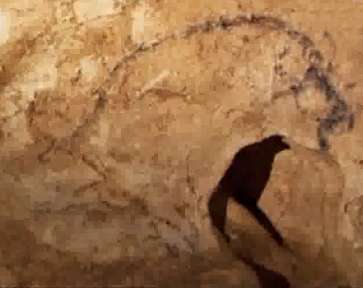
Bison. This artwork appears to make use of the relief of the cave wall to enhance the shape and impact of the image.
Photo: http://webtv.realitatea.net/actual/picturi-rupestre-vechi-de-35-000-de-ani-descoperite-in-romania
Cave gallery in which the paintings were found. This appears to show two cavers squeezing beneath a ceiling and the water of a lake.
Photo: Andrei Posmosanu © Romanian Federation of Speleology – FRS
Source: http://www.ebihoreanul.ro/stiri/ultima-or-31-1-19/cele-mai-vechi-picturi-paleolitice-din-europa-centrala-descoperite-intr-o-pestera-din-bihor-88112.html#
Coliboaia Cave
“Coliboaia Cave is pervaded by an underground river, which forms several traps, making it exceptionally difficult to penetrate the galleries. Up until now, the cave was not even included on the list of protected caves, although the area is part of Apuseni Natural Park. There have been several expeditions there, but five cavers went deeper inside than all the others and have gone through three completely flooded areas, after which they came across a high gallery, and found the wall paintings”explained Lascu.
According to the source, the paintings are black and represent animals including a bison, a horse, possibly a cat, one or two bear heads, and two rhinoceroses. An engraving, representing the torso of a woman, was also found, probably a symbol. “On the ground were the bones of a bear. Some of the paintings were damaged by water and there was evidence of bears that have been in the cave in the form of scratches and polishing on the walls” said the cavers.
The paintings were verified by a team led by Jean Clottes, one of the most prominent specialists in cave art in the world, and the team also included Gély Bernard, a specialist in cave art, as well as speleologists Meyssonnier and Valérie Marcel Plichon, and Philippe Michel, a paleontologist specialising in cave bears, as well as Françoise Prudhomme, a specialist in general prehistory.
Following tests, experts confirmed the authenticity of paintings and engravings. “After their examination, the paintings can be classified as belonging to an ancient period of mural art, the Gravettian and Aurignacian (between 23 000 and 35 000 years BP”. It is the first time in Central Europe that parietal art so old has been discovered.
Following the discovery, by courtesy of the Romanian Federation of Speleology and the Apuseni Natural Park Administration, the cave was immediately put under protection, and given conservation status, under the authority of the archaeological museum and the administration of Crisurilor Bihor County Council, to be included in a complex multinational multi-institutional research project.
“The archaeological site is extremely valuable, comparable to Sarmisegetuza Cucuteni, for example”, said Lascu.
Text above from: http://www.ebihoreanul.ro/stiri/ultima-or-31-1-19/cele-mai-vechi-picturi-paleolitice-din-europa-centrala-descoperite-intr-o-pestera-din-bihor-88112.html#
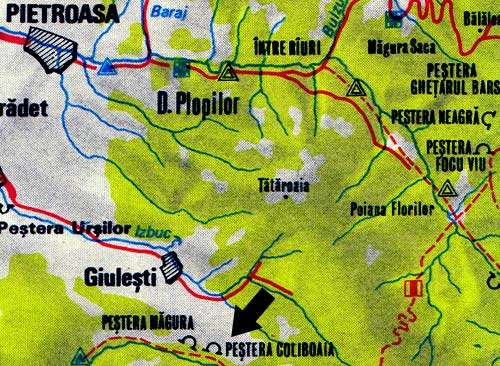
Map of cave location
Photo: http://www.ceti.pl/~miekinia/encyklopedia/encyklopedia.php?lit=CA&limit=2&lang=1
Position of Coliboaia Cave.
The cave is at:
46° 31.894’N, 22° 35.755’E
It is roughly ten kilometres south-east of Pietroasa, (which translates as “stony”!), the closest big town.
It is limestone country, and it is a karst landscape, with sinkholes, bridges (from collapsed caves) and lots of caves in the Apuseni Mountains area, or Muntil Apuseni. There is a thriving caver community in the area, as you would expect, as well as people very interested in the conservation of bats, which love the place for obvious reasons.
Photo: Google Earth
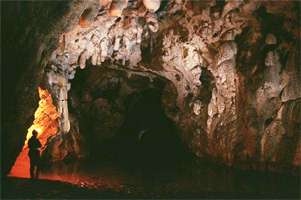
This is a beautiful shot over the water which floods many parts of the cave.
The entry is triangular, only 2 metres tall, surrounded by a high limestone cliff, and opens to the top of a slope of scree which descends into a chamber about 15m wide and 40m long, followed by a large, straight gallery, which is crossed by a watercourse with an impenetrable sump.
Two other traps complicate the underground route. A stream runs through most of the clay terraces and finishes, depending on the amount of water in it, either at the end of the gallery, or at the southern wall of the room.
It reappears finally as an intermittent spring below the cave entrance. Water may flood the entire gallery floor. Concretions are limited to the last third of the gallery, where the walls are covered with large stalagmites. The total length of cave is 750m.
Photo: © Dinu Mititeanu
Source, and text translated from: http://alpinet.org/main/poteci/puncte_ro_t_pestera-coliboaia_id_3474.html
Coliboaia cave entrance and the steep ramp down to the first chamber.
Photo: © Moni and Cristi Davidovici
Source: http://ferestresprenatura.blogspot.com/2009/03/calatori-in-lumea-intunericului.html
The cave itself is well known as an interesting cave to explore.
Photo: © dorinpetrut
Source: http://good-times.webshots.com/album/559627262SeBrvh?start=12
However, it is not easy to get to some parts of the cave, and good equipment and knowledge of caving is required.
Photo: © Hoinarii
Source: http://picasaweb.google.com/lh/photo/XlB9K5Ws_dnbt31iLUdbMg
One of the many lakes which must be crossed to gain the further parts of the cave.
Photo: © S. Kotarba
Source: http://www.sktj.pl/epimenides/jaskinie/jask11.html
Stream in Coliboaia cave.
Photo: © by tmtibimate
Source: Panoramio/Google Earth
The approach to the cave is along a very pleasant valley, the Valea Sighistelului, or Sighistel Valley. The Sighiştel River is a tributary of the Crişul Negru River in Romania.
Photo: © APLR
Source: http://www.batlife.ro/?p=284&lang=ro&album=4&gallery=19
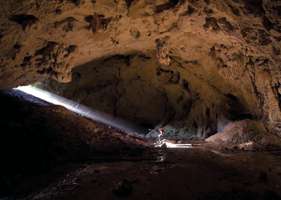
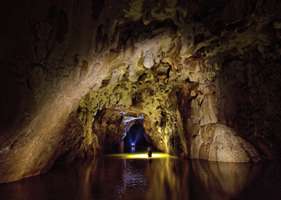
The first of these photographs shows the entrance ramp down to the first chamber, with a shaft of sunlight illuminating the caver. This is a superbly realised shot, and achieves the difficult photographic task of including the bright sunlight, yet showing details of the cave floor and roof.
The second shows a caver standing hip high in the water of a lake in the cave system, with another caver beyond, further along the lake. Once again, a wonderful photograph. These are the work of a very accomplished photographer.
Photo: © Andrei Posmoşanu. Used by the kind permission of the photographer.
Source: www.momente.ro/php_files/albume_foto/sec_000/album_apuseni.pdf
I found these photographs in a well designed and executed PDF document with the title:
Through the Apuseni Mountains
Above and Beneath the Earth
Partners in this project were: Administratia Parcului Natural Apuseni, Asociatia “Zöld Kör” Ungaria, with the support of: Consiliul Judetean Bihor, Federatia Româna de Speologie, Asociatia Rangerilor din România, National Geographic România, Traditional Casa Experience and Apuseni Experience.
Coliboaia cave entrance portal.
Photo: © by tmtibimate
Source: Panoramio/Google Earth
Sources: dons maps
The Danube Delta, a buffering interface between the Danube river catchment (805, 300 sq. km and the Western Black Sea (5,165 sq. km) is a unique place not only in Europe, but also among other delta ecosystems due to its high biodiversity, to its renewable natural resources and to its beautiful scenery doubled by its cultural sites remnants and worth. The Danube Delta is a large scientific laboratory for a whole range of research-workers and explorers, whether ecologists, biologists, botanists, zoologists, ornithologists, geologists, geographers etc. as it is singles out by being
· the youngest land in Europe (it grows larger by 40 m of land every year);
· the second largest delta in Europe (Volga is the first) and the 23rd in the world;
· the third in ecological significance among the 300 reserves of the world;
· a highly productive area generating a large range of biological resources;
· one of the largest and most compact reed areas in the world (240,000 ha);
· a place with the richest ornithological fauna in the world (over 250 species);
a combination of natural and man-made ecosystems and ecotones, i.e. fresh water, sea water, terrestrial ecotones, running and stagnant waters, marshes, easily flooded zones, river levees, maritime levees, reclamation zones for agriculture, pisciculture, forestry etc.. In the Danube Delta there are islands of old forests with subtropical species of vegetation rare for this part of the world placed between 45 degrees latitude north and 29 degrees longitude east, at half-distance between the Equator and the North Pole;
the most important wetland area in South Eastern Europe, with a significant role to the regional and global water cycle;
an area of highest diversity with insects, birds and fishes and a crossroads for migratory birds;
a place where globally endangered and therefore rare species of birds are to be found, like Dalmatian pelicans, pygmy cormorants, red-breasted geese, or the Pelecanus crispus, the Pelecanus onocratslus, Egretta alba, Egretta garzeta.
a zone of fisheries covering some 90 species of fresh, brackish and salt water fishes, whether sedentary or migratory, among which rare species like the Acipenseriadae; one of the fewest places in the world which shelter mammals like Mustella lutreola and the otter (Lutra lutra).



